Mavic moves ahead for 2009
Mavic's Cosmic Carbone Ultimate may occupy the top rung of the company ladder in terms of absolute...
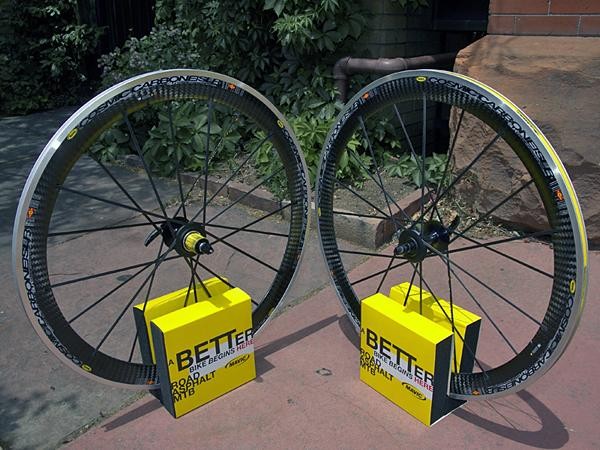
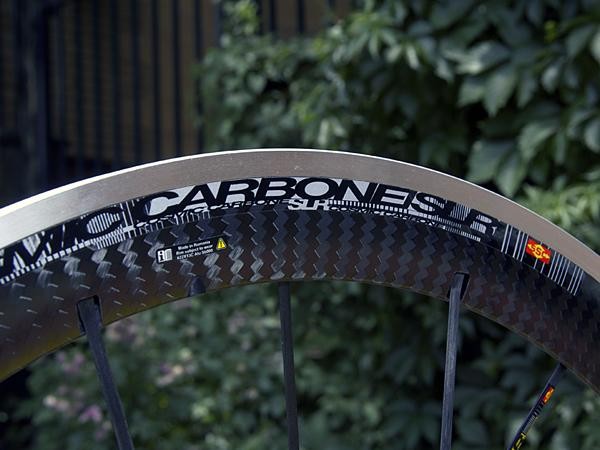
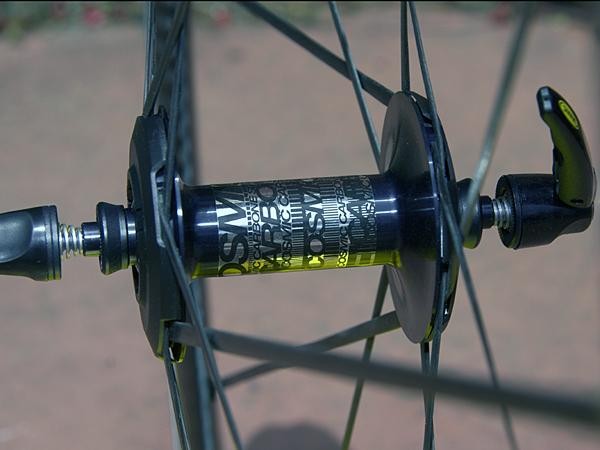
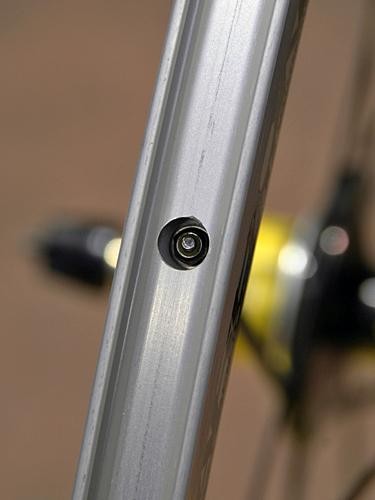
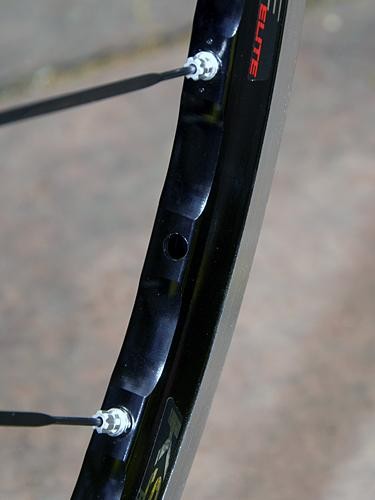
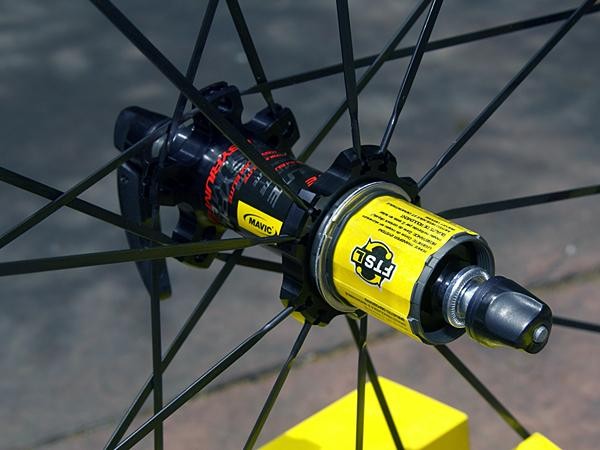
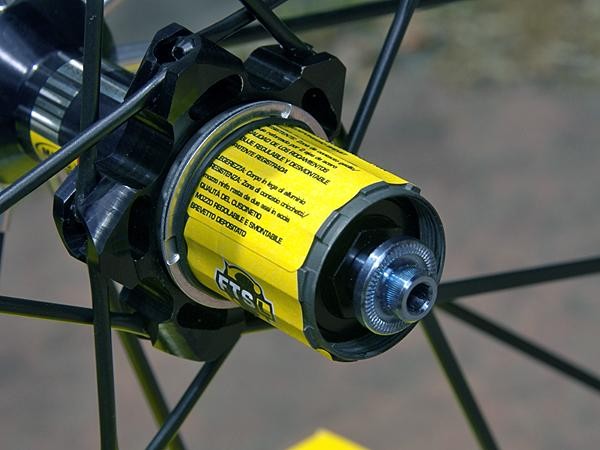
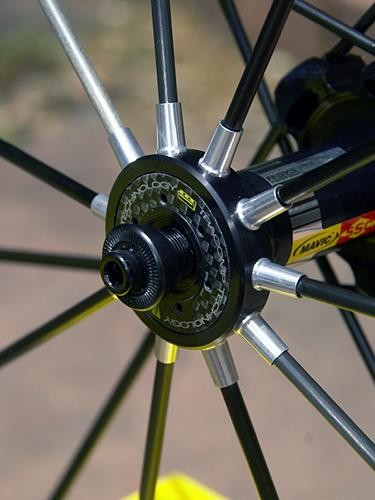
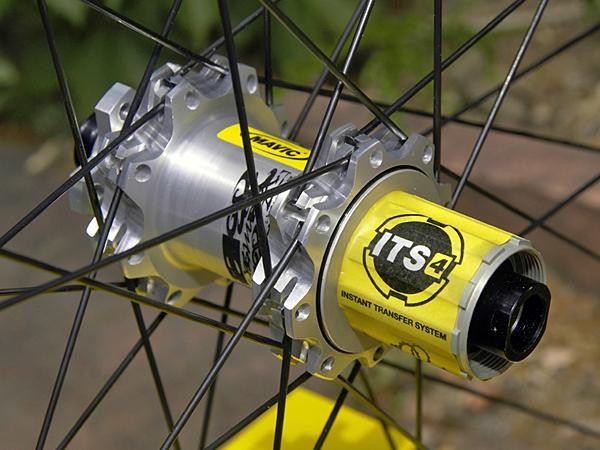
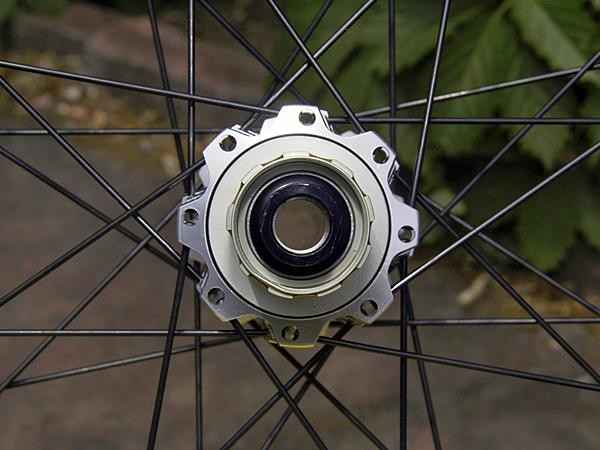
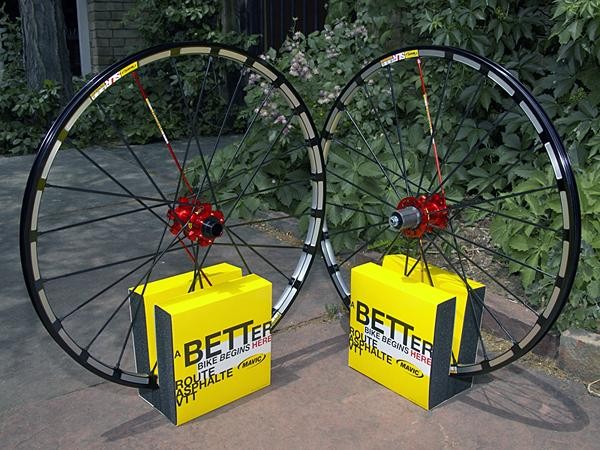


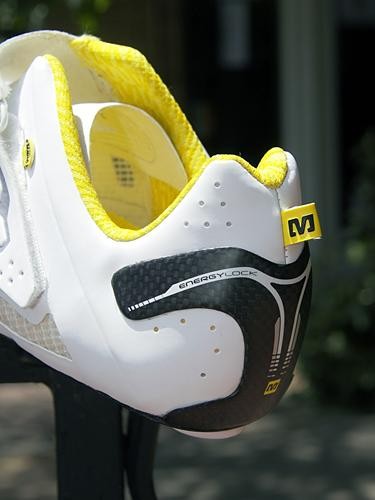
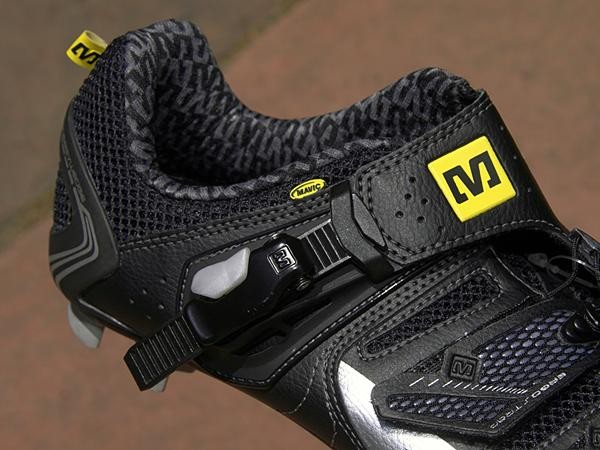
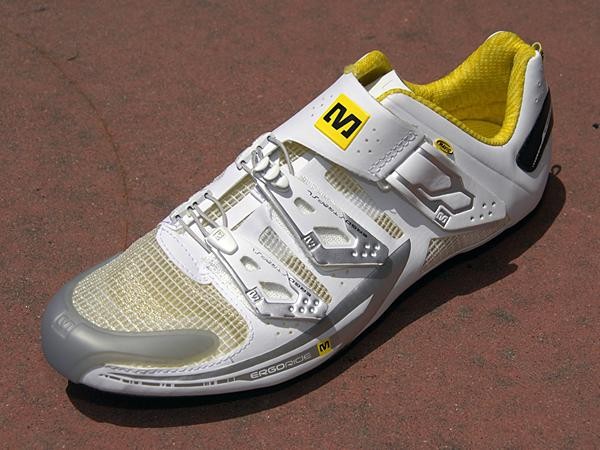

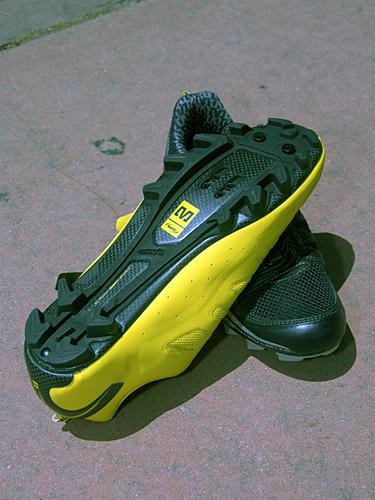
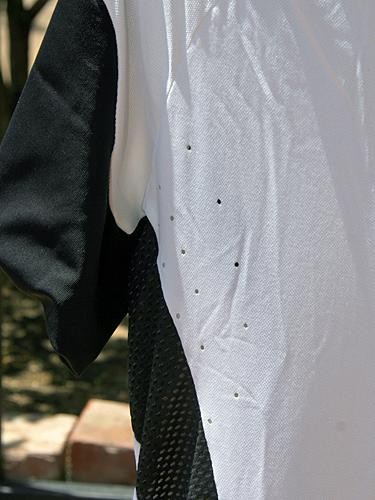
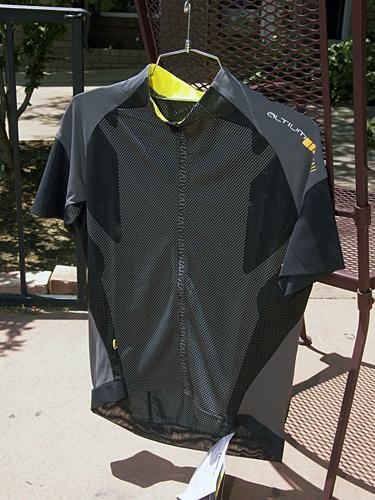
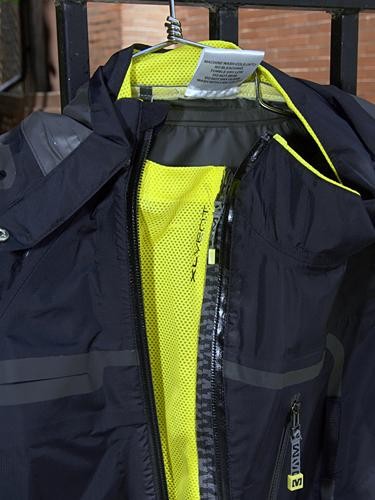


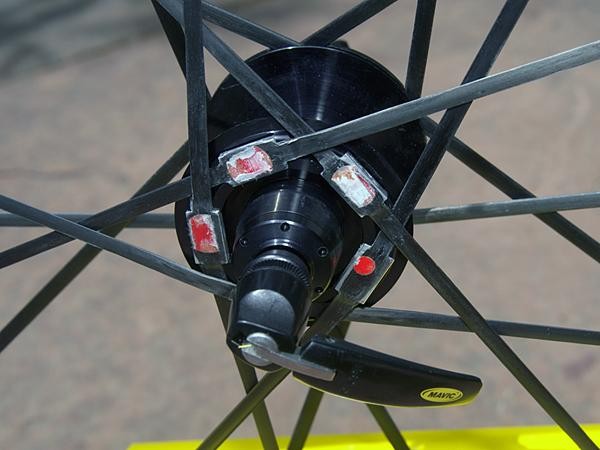
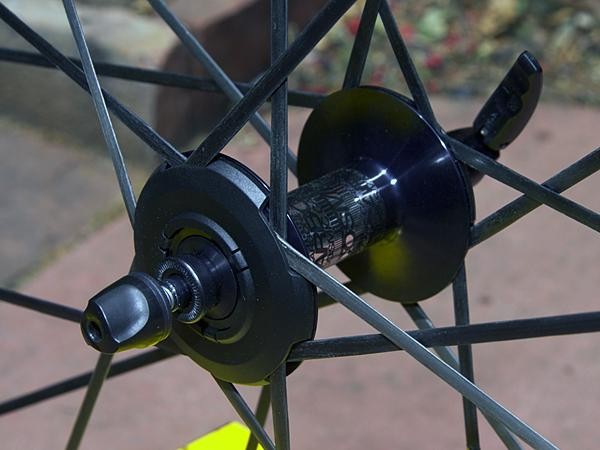


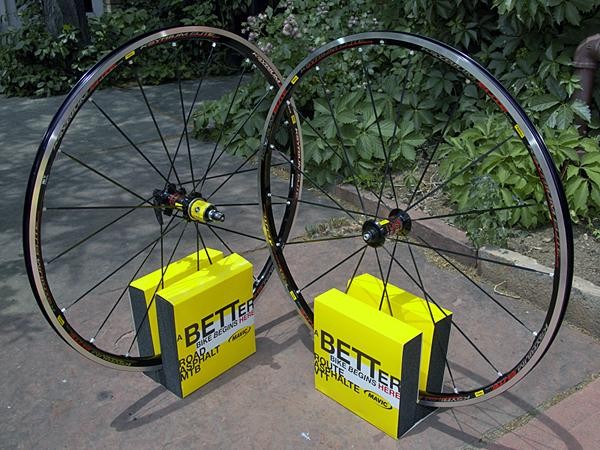
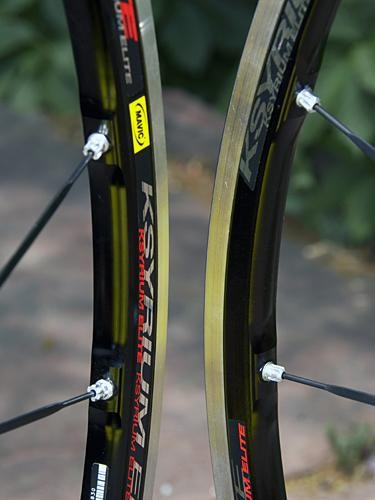


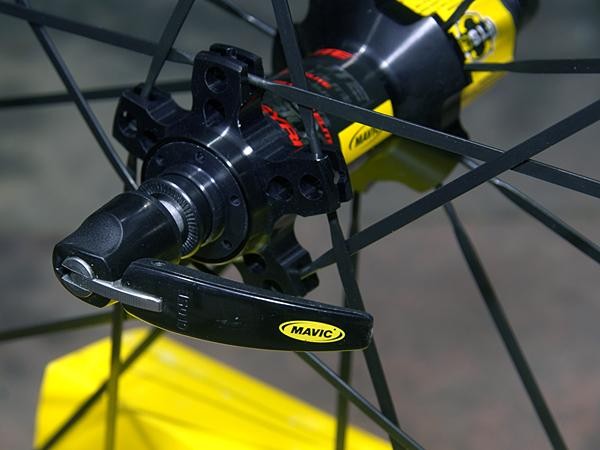
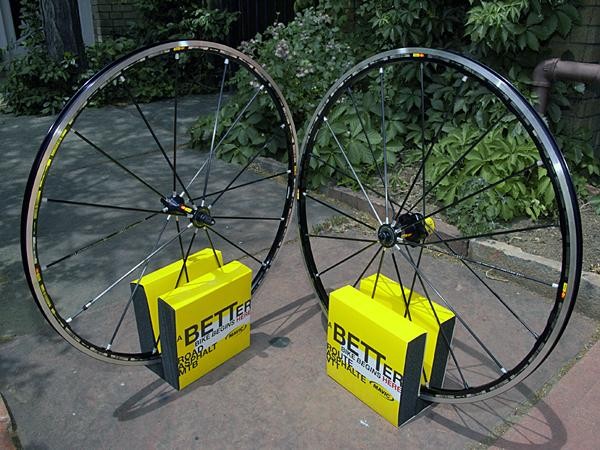


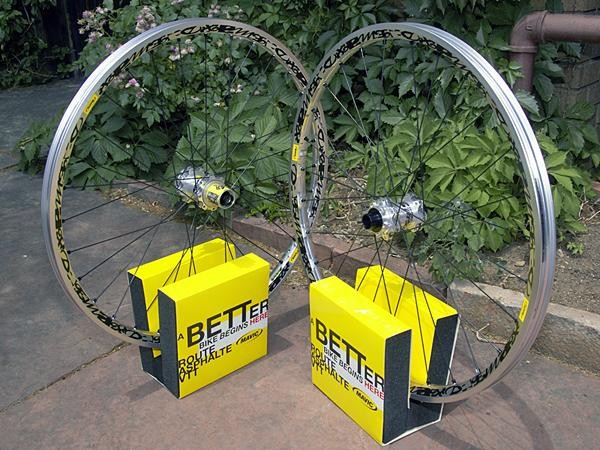
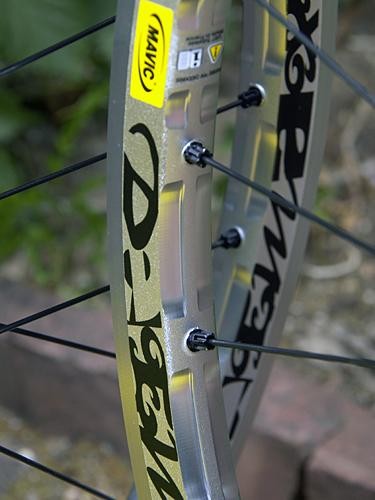


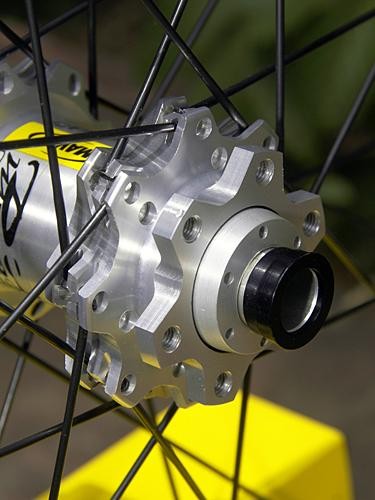
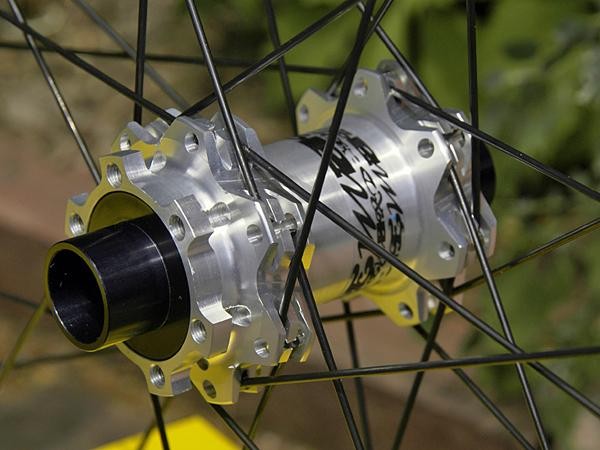


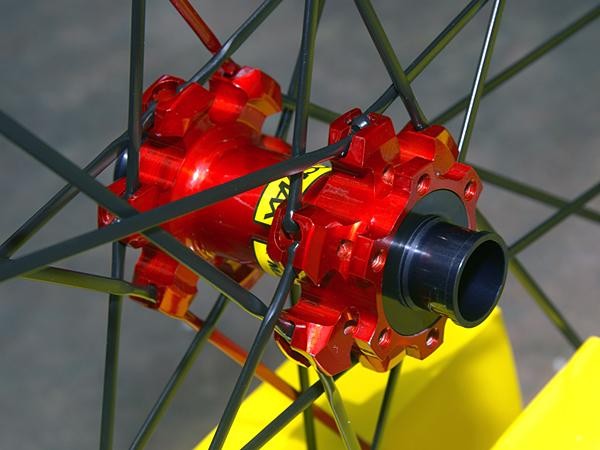
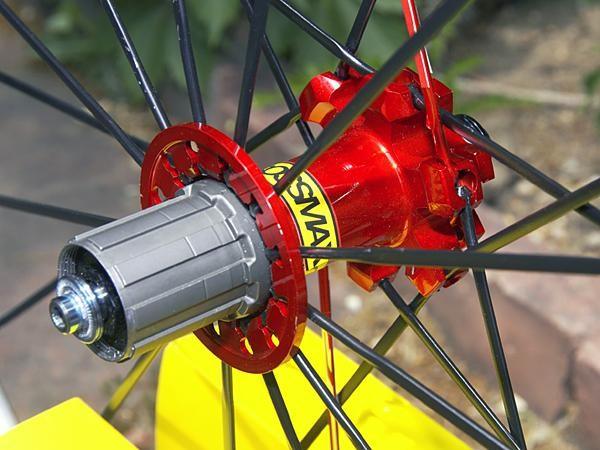


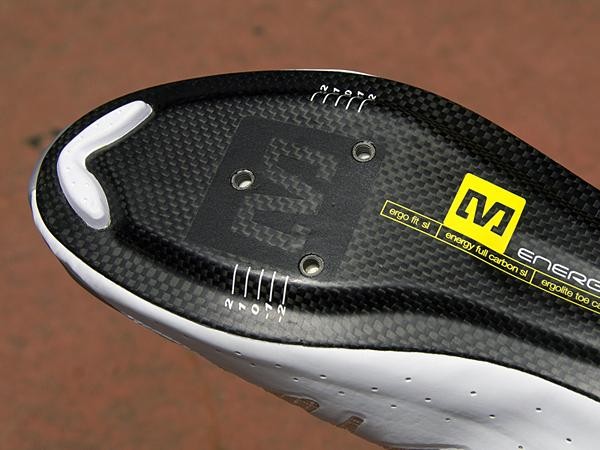
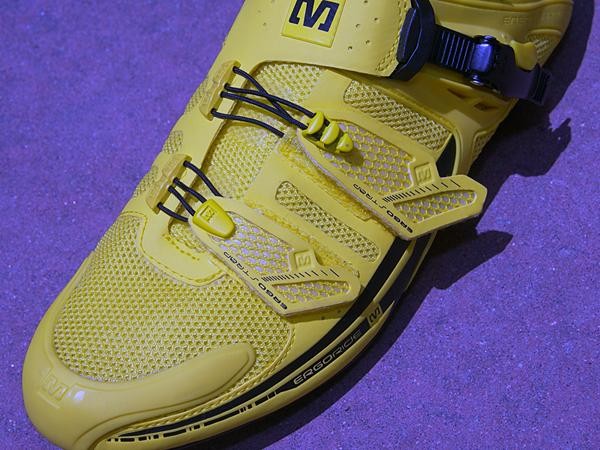


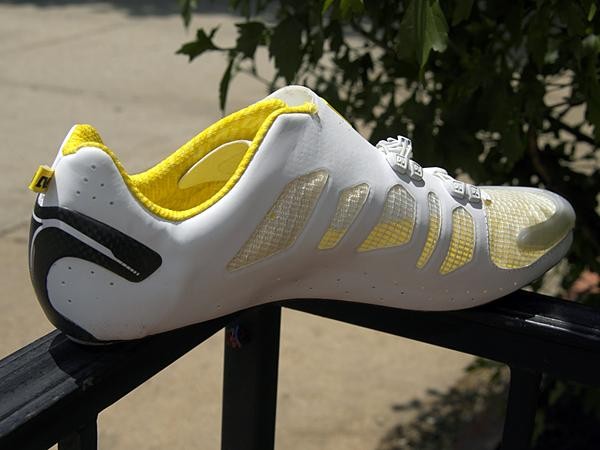
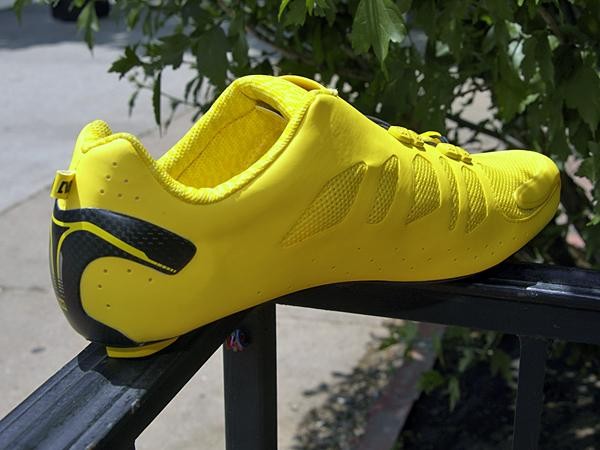


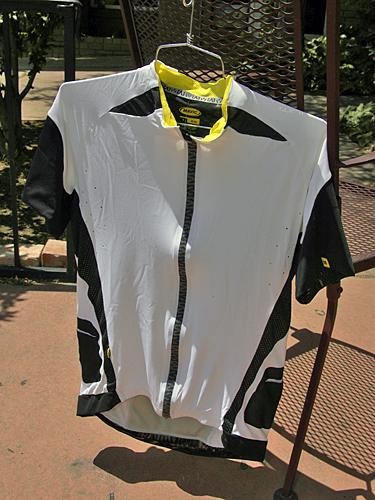
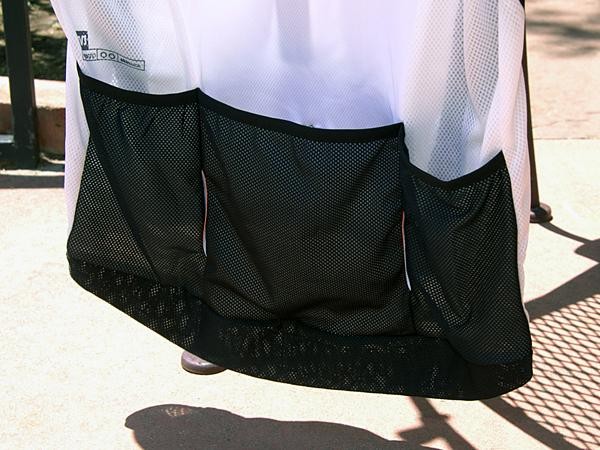


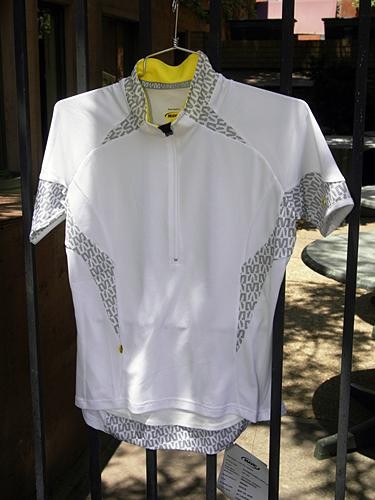
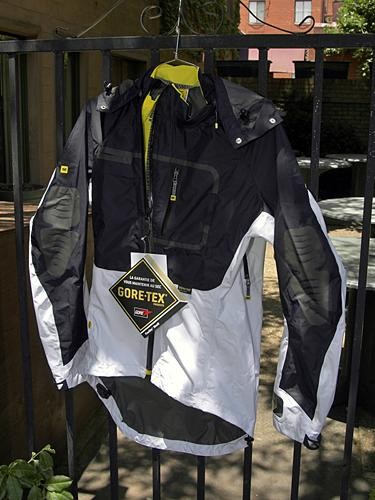

Tech feature: 2009 Mavic introduction, June 27, 2008
2009 looks to be a big year for the French wheel giant who will not only launch a number of new road and mountain models but also its own line of apparel and footwear. Cyclingnews technical editor James Huang gets to stay at home for once as Mavic brings its press launch 'lite' to Boulder, Colorado.
Lighter aero road wheels at the top end…
Mavic's Cosmic Carbone Ultimate may occupy the top rung of the company ladder in terms of absolute performance but the new 2009 Cosmic Carbone SLR may end up being our overall top pick for a do-everything race wheel that can still be used everyday.
At just 1595g per pair (without skewers), the SLR lops 175g from last year's Cosmic Carbone SL and is now light enough to consider for many climbing-intensive events. The SLR is faster, too, thanks to new flat carbon fiber spokes that span from one side of the rim to the other. This new layout, called R2R (Rim to Rim), also makes for sleeker and lighter hub shells since the conventional spoke anchoring points are eliminated. Threaded ends and internal nipples still allow for relatively easy truing, too.
Interestingly, Mavic will only offer the Cosmic Carbone SLR in clincher versions. While a bit heavier than an equivalent tubular, this setup yields far better day-to-day livability and the newly ISM-enhanced (Inter Spoke Milling) aluminum rim extrusion (20-25g lighter than last year) also offers more consistent braking performance than full-carbon hoops. Suggested retail is US$1,999.
A new rim extrusion also finds its way on to a revised Cosmic Carbone SL whose weight drops to 1740g per pair. There are no upgrades otherwise for '09 but there's a significant US$300 price drop; suggested retail is now just US$1,199. The speedy Comete disc rear wheel loses about 90g, too, thanks to lighter carbon skins and a slimmer aluminum axle.
Get The Leadout Newsletter
The latest race content, interviews, features, reviews and expert buying guides, direct to your inbox!
During our brief test ride (on familiar roads for once), we found the SLR to be surprisingly comfortable in spite of its section depth as well as blazingly fast as we careened down Left Hand Canyon. The weight felt more than reasonable as we crested the last rise over Old Stage heading back into town, too, and the R2R construction delivered a wonderfully snappy feel. If we could only have one Mavic road wheel in our quiver, this would definitely be it.
…and better value in the middle
Mid-range consumers arguably reap the biggest rewards in the coming season with the revamped Ksyrium Elite, which morphs from a rather portly also-ran to a bona fide contender for your hard-earned money. The '09 version loses a whopping 140g per pair while the upgraded skewers subtract another 35g or so. The Inter Spoke Milling (ISM) feature previously reserved for the more expensive Ksryium models now finds it way here, too. Even better is the fact that suggested retail prices climb only US$25 to US$625 and US$650 for the silver or black-anodized finishes, respectively.
The rest of the Mavic road lineup carries over into the new model year although the R-SYS gains a new R-SYS Premium variant with titanium axle ends and skewers, carbon fiber dust caps and a stealthy new black finish. Retail costs climb US$100 on this model to US$1,499.
'Big' changes in the off-road lineup
Most of the major changes in Mavic's 2009 off-road lineup come at the heavier-duty end of the spectrum. Among the most heavily revamped is the top-end Deemax downhill race wheelset which sheds a whopping 500g (1.1lb!) for a total claimed weight of just 2160g for the pair in the lightest configuration.
The weight comes off from nearly every component: the rims are treated to a new spined ISM treatment, the all-new hubs are more aggressively machined and the stainless steel spokes are now double-butted. Spoke count on the rear has jumped from 28 to 32 and a new SRS (Spoke Retention System) milling at the hub flanges supposedly eliminates spoke ejection issues that occasionally plagued last year's version on bigger impacts. According to Mavic, the changes also provide the more compliant ride its pros asked for without compromising wheel strength.
Last year's modestly updated FTS-X freehub body will also be replaced with a new ITS-4 (Instant Transfer System 4) driver whose two alternating pairs of pawls yield a far faster 7 degree engagement interval instead of FTS-X's comparatively lazy 17. Moreover, ITS-4 uses cartridge bearings for both the inboard and outboard sides of the freehub body (FTS-X uses an inboard bushing) yet is still 20g lighter thanks to alloy construction instead of steel. The enlarged internal dimensions afford easier compatibility with rear thru-axle standards, too. As before, the 31mm-wide rim (25mm internal width) is still UST-compatible.
Retail price for the Deemax is US$900 for 135mm versions or US$1,000 for the 150mm-wide model.
The thoroughly revamped Deetraks retains its focus on big-hit durability but retains its more wallet-friendly price tag. As on the Deemax, the US$450 Deetraks sports ITS-4 internals (and its enhanced thru-axle compatibility) and has lost a considerable 380g of excess mass; claimed weight is 2255g per pair. In keeping with the value-oriented theme, Mavic also focused on repair ease with a standard 32h spoke count front and rear and conventional J-bend spokes.
ITS-4 also finds its way on to the all-mountain Crossmax SX and all-new Crossline. ISM and the new hub internals help the Maxtal-spoked Crossmax SX shed 165g from last year (claimed weight is 1755g per pair) and the 135mm OLD hub will be compatible with 10mm or 12mm thru-axle rear ends for the first time. The 20mm TA-specific front hub also sprouts wider flanges for improved lateral rigidity; the 9mm quick-release option is gone.
In contrast, the Crossline uses a more conventional non-welded aluminum rim and steel spokes to bring the weight up to 2055g per pair. There's no UST compatibility with the Crossline, either, although it does get the same 135x10/12mm thru-axle compatibility as the Crossmax SX. At just US$400, though, the Crossline will be considerably cheaper; the SX cost climbs for '09 to US$900 per pair.
Unfortunately for the cross-country crowd, Mavic's top-end Crossmax SLR Disc cross-country race wheelset makes do with FTS-X for another season but ISM 3D milling drops 20g per rim. Front hub compatibility has expanded, though, as the standard 9mm quick-release version can now also be converted for use with Shimano's new 15mm thru-axle system.
Curiously, Mavic has also added a 20mm thru-axle version of the Crossmax SLR with a version-specific hub shell. Given the SLR's short-travel cross-country intentions, we can't help but wonder if one of the major fork manufacturers out there has something cooking for the near future. Perhaps a 20mm TA RockShox SID with a Maxle Lite?
Either way, Center Lock and six-bolt disc attachment styles carry through and claimed weight is now just 1500g for the lightest version. Unfortunately, prices climb a bit to US$1,199. Not surprisingly, there was no word on the carbon-spoked Crossmax model we saw at this past weekend's UCI World Championship in Val di Sole, Italy.
The versatile Crossmax ST Disc carries over with the exception of the new convertible 9mm/15mm front hub.
Mavic moves into footwear…
Mavic's new line of footwear belies its first-year status (at least at first glance), which should perhaps come as no surprise as it likely gleaned a lot of experience in developing Adidas-branded shoes over the past few years. Interesting features on several models include the carbon fiber Energy Lock external heel counter which aims to mechanically anchor the heel in place; semi-rigid Energy Frame construction around the rear of the foot for better support; bonded uppers that virtually eliminate all seams; and rigid Energy carbon fiber sole plates, some of which are fitted with titanium cleat inserts.
The unique Ergo Strap forefoot straps will certainly be familiar to current Adidas wearers although the Ergo Fit insoles (which use up to five layers in top models) will definitely be new.
The lightest road model, the Huez, is claimed to weigh just 195g each for a UK sz8.5 while other high-end models hover between 250g and 300g apiece.
Mavic will also offer mountain bike shoes in both racing and all-purpose flavors, as well as tri-specific models. We weren't able to try on any samples during our 'mini' press launch but the features and specs are intriguing enough for us to warrant getting some in to try. Thor Hushovd and about 10-12 other riders are apparently already convinced, though, as they'll be using bright yellow Zxellium road shoes in next month's Tour de France.
Rounding out the range for 2009 is a full line of clothing, too, captained by the ultra-techy Altium range. These pieces will serve as showcases for Mavic's most cutting-edge technologies and fabrics, such as a nearly-seamless pair of bib shorts, ultra-lightweight jerseys and laser-cut ventilation holes. Refreshingly, there will be an Altium line for women, too, in addition to comprehensive lines of mountain bike-specific gear and outerwear.
Does the market need yet another brand of cycling clothing? Maybe not, but we saw enough interesting detail in our brief encounter to pique our interest so we'll keep you posted here. The apparel, footwear and wheels should begin arriving in stores around September.